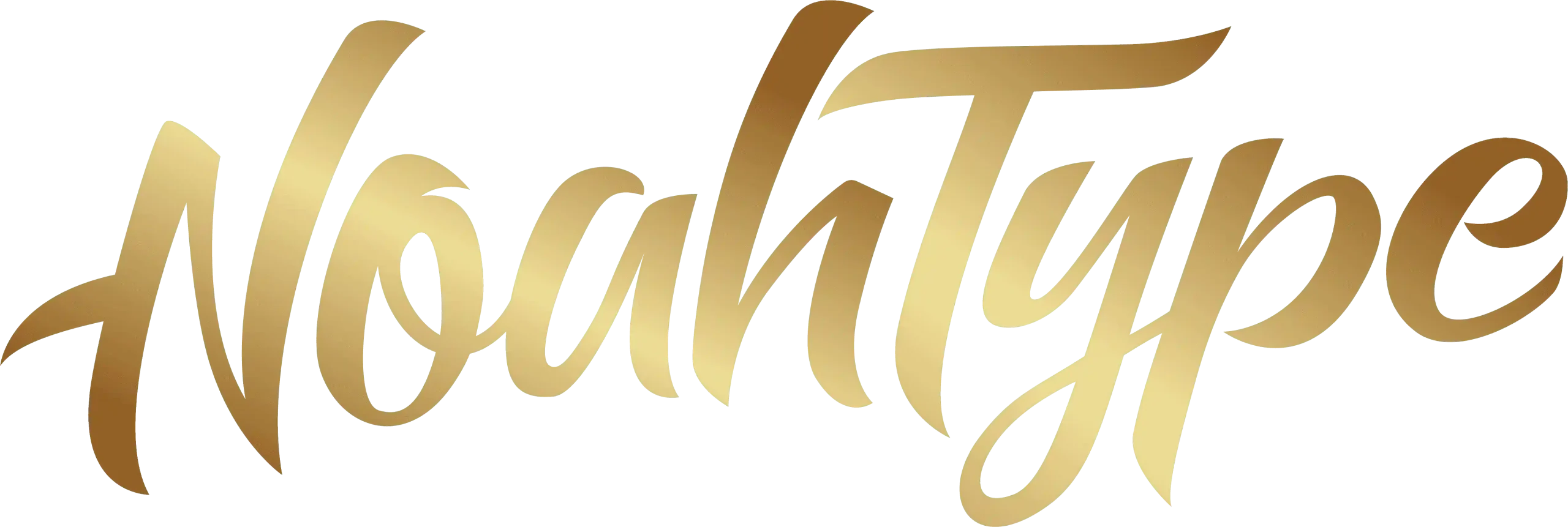How To Choose Decorative Fancy Fonts for Stunning Designs
Table of Contents
- Introduction
- What Is a Decorative / Fancy Font?
- Why Choose a Decorative Font?
- Key Criteria When Choosing Decorative Fancy Fonts
4.1 Legibility & Readability
4.2 Style & Mood Matching
4.3 Contrast & Pairing Strategy
4.4 Versatility & Font Variants
4.5 Technical Aspects & Web Performance - Steps & Process: How To Choose
- Mistakes to Avoid
- Showcase & Internal Examples (NoahType Products)
- Conclusion

1. Introduction
In a sea of visual content, decorative or “fancy” fonts can help your design stand out, evoke emotion, and reinforce brand identity. But with great power comes responsibility: use the wrong one, and you risk hurting clarity or user experience. This article dives deep into how to choose decorative fancy fonts in your digital and print projects, offering both design theory and practical steps — plus examples from NoahType’s Fancy Font collections to inspire you.
2. What Is a Decorative / Fancy Font?
A decorative (or display / fancy) font is typically a typeface designed to draw attention rather than serve long bodies of text. These fonts often include flourishes, unusual shapes, ornamentation, swashes, or stylized details. (sitepoint.com) They are meant to be used in headlines, logos, titles, banners — not as paragraphs of body copy. (marker.io)
Because of their decorative nature, they tend to carry a strong personality, making them ideal for expressive branding, creative projects, greeting cards, posters, or special announcements.
3. Why Choose a Decorative Font?
Here are some key reasons to incorporate a decorative fancy font into your design:
- Brand Identity & Personality: A fancy or decorative font can convey mood — elegant, playful, vintage, whimsical, spooky, etc. (designmodo.com)
- Visual Hierarchy & Emphasis: Decorative fonts naturally attract attention. For headers or titles, they act as focal points.
- Differentiation: In competitive design spaces, a unique decorative font helps a project stand out from generic typography.
- Thematic Design: If your design has a theme (e.g. wedding, fantasy, retro), a decorative font can reinforce that concept visually.

4. Key Criteria When Choosing Decorative Fancy Fonts
4.1 Legibility & Readability
Even decorative fonts must remain readable at their intended size. Avoid overly intricate designs when your letters become indistinguishable. Use decorative fonts for short passages (headlines, logos) — not body text. (blog.hayleyjade.co.uk)
4.2 Style & Mood Matching
The font’s style should align with the emotional tone of your design. Is the mood elegant, fun, gothic, retro, playful? Let the decorative elements (swashes, ornamentation, line weights) reflect that. (crowdspring.com)
4.3 Contrast & Pairing Strategy
Your decorative font should play nicely with neutral fonts (serif, sans serif) to maintain balance. The decorative should not compete with your body text. Nielsen Norman Group suggests mixing decorative fonts with neutrals and assigning distinct roles. (nngroup.com)
4.4 Versatility & Font Variants
Check whether the font comes with multiple weights (regular, bold, italic) or alternate glyphs. A decorative font with flexibility gives more design freedom. Also check language support (accents, special characters) if you’re designing for multilingual projects.
4.5 Technical Aspects & Web Performance
For web use, performance matters: how fast does the font load? Does it support web formats (WOFF, WOFF2)? Are there fallback fonts? Overuse of decorative web fonts can slow page loading or cause Flash of Unstyled Text (FOUT). (marker.io)
5. Steps & Process: How To Choose
- Define Your Design Goals & Mood
- Gather Inspiration & Moodboards
- Narrow Down to a Shortlist
- Pair with Supporting Fonts
- Test Across Sizes & Use Cases
- Check Technical & Licensing Details
- Finalize & Use Sparingly
6. Mistakes to Avoid
- Using decorative fonts for body copy or long paragraphs.
- Mixing too many decorative fonts at once — limit to one decorative + one neutral.
- Ignoring contrast (color, weight, spacing).
- Neglecting technical performance (too many font files or heavy weights).
- Overlooking language support or glyph coverage.
7. Showcase & Internal Examples (NoahType Fancy Fonts)
Here are some fancy fonts from NoahType you can explore:
- Popovers Fancy Font – Playful and comic-style curves, perfect for kids’ projects, posters, and fun logos.
- Daybook Fancy Font – Whimsical handwritten style, ideal for invitations, branding, and cheerful designs.
- Bouncy Campus Fancy Font – Retro and quirky, great for school themes, youth merchandise, or video game logos.
- Old Cartoon Fancy Font – Cartoon-inspired display, perfect for comics, children’s covers, or playful ads.
These NoahType Fancy Fonts provide diverse options for expressive, playful, elegant, or bold designs.

8. Conclusion
Choosing a decorative fancy font is both an art and science. You want a font that expresses your design’s personality while still being legible and technically sound. By following readability, mood matching, pairing, versatility, and performance guidelines — and testing fonts in real contexts — you’ll make more confident font choices.
At NoahType, we offer Fancy Fonts that combine beauty and functionality. Explore our Fancy Font Collection to discover the right fit for your next project.
